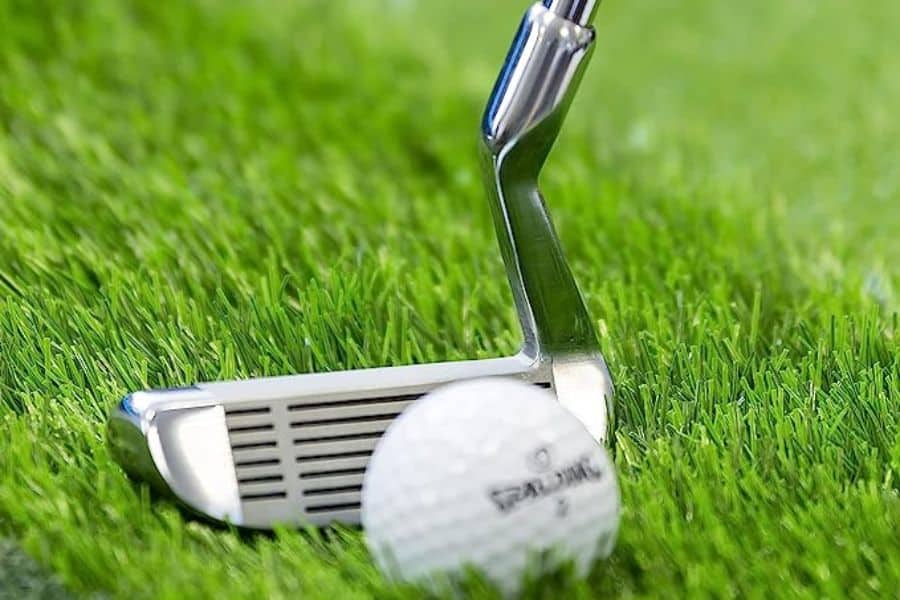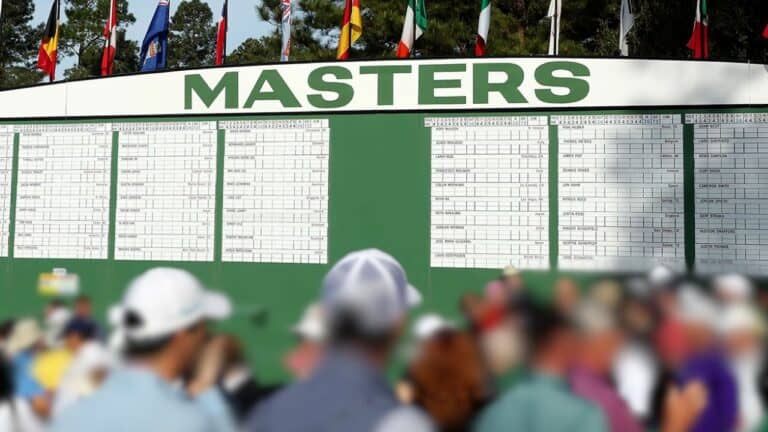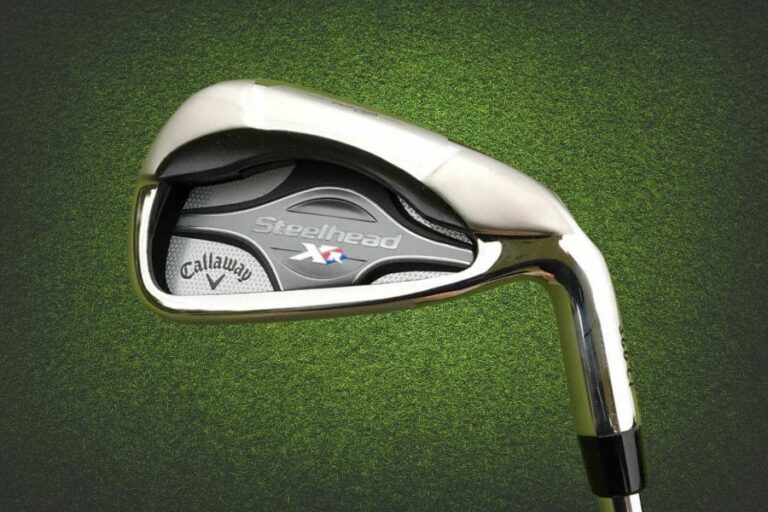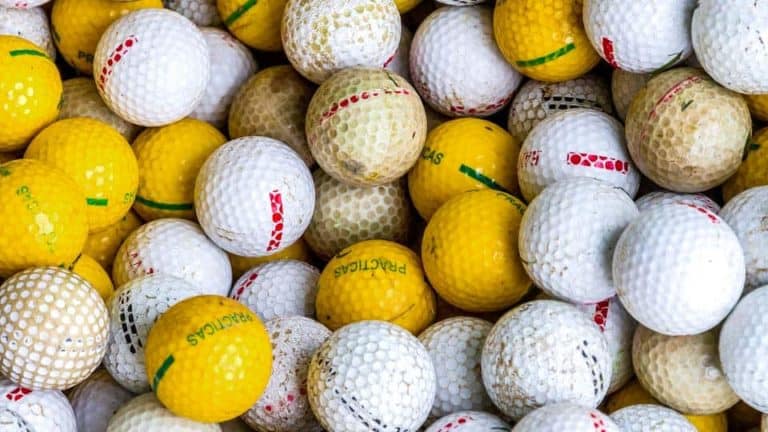Are Chippers Legal in Golf? (2023 Latest Update)

The chipper golf club has become a topic of attention and controversy in recent years. While chippers are indeed legal in golf, there is considerable confusion and debate surrounding their use.
In this article, we will delve into the nature of golf chippers, their legality in competitions, the arguments for and against their use, and the regulatory considerations that come into play.
I. What is a golf chipper?
A chipper is a unique club that blends features from both a putter and an iron. While it shares the appearance of a putter, it is lofted similarly to 7 or 8 iron with a range of 32 to 37 degrees, significantly higher than a typical putter. This elevated angle is the reason it is often called a “chipper putter.”
One distinctive characteristic of a chipper is its wide sole, which prevents the club from digging into the turf or becoming stuck in rough areas near the green.
In comparison to putters, chippers are heavier and possess a strategically placed center of mass. This design facilitates smoother navigation through challenging terrain. Using a chipper allows golfers to employ a putting stroke, offering better accuracy and consistency.
II. Are chippers legal in golf?
Some chippers are considered legal in regulated golf matches. However, not all chippers are treated equally. According to the USGA, chippers are allowed to be used on all greens and in all situations.
However, since a chipper is categorized as an iron, it must adhere to the rules and regulations set for irons. This means that chippers must conform to the specifications outlined for irons in order to be considered legal for use in golf matches.
Are double-sided chippers legal in golf?
Regular chippers are legal in golf, but double-sided chippers or two-way chippers are not. Using a double-sided chipper can result in automatic disqualification for an individual player or an entire team in team situations. The problem with double-sided chippers lies in the fact that they have two club faces.
According to USGA rules, a club is considered legal if its clubfaces have a loft of less than ten degrees. While a putter with two clubfaces is permissible, the clubfaces of a double-sided chipper exceed the ten-degree limit, making them illegal.
III. Can you use a chipper in a golf competition?
Yes, chippers can be used in golf competitions. However, there are specific requirements for a chipper to be considered legal. These include:
- Having a one-sided head.
- It should not be longer than a 7-iron.
- Not featuring any graphics that assist with the aim.
- Including a circular cross-section grip designed for irons.
Legal chippers often bear a “USGA qualified” seal, which serves as an indication of their compliance with these regulations.
IV. Rules and regulations to use a chipper
When it comes to using a chipper in golf, there are specific rules and regulations set by the USGA that golfers should be aware of. Here are the key regulations regarding length, clubhead, grip, and other factors:
1. Overall length
According to the rules, the longest an iron, including a chipper, can be is 48 inches. But sometimes, in certain competitions, the limit is even shorter at 46 inches. Most golfers don’t need to worry about this, but it’s good to know that chippers can come in different sizes.
2. Clubhead
According to the USGA rules, chippers must have a clubhead that is rigid, stable, and functional. Additionally, they are prohibited from having any graphics that aid with aiming.
3. Grip
The USGA regulations specify that all irons, including chippers, must have a single grip with a circular cross-section. It’s worth noting that this requirement differs for the putter grip, which can have grips with non-circular cross-sections. So be mindful of the grip design when using a chipper.
4. Number of clubs in the bag
When playing a round of golf, it is important to understand the limitations set by the USGA regarding the number of clubs we can carry in a golf bag. The maximum allowance is 14 clubs per golf bag. Therefore, it is crucial to consider your club preferences and decide whether the chipper will be one of the clubs included within this limit.
5. Electronic devices
The use of electronic devices on clubs, such as those measuring distance or elevation, is not permitted. While most clubs do not incorporate such devices, it’s important to be aware of any variations in design, especially since chippers are relatively newer clubs.
6. Adjustable features
Some clubs, including chippers, may have adjustable features for weight and length. However, according to USGA rules, these adjustments cannot be made during rounds. If your chipper has adjustable features, ensure that it is set to a fixed position throughout the round.
V. Pros and cons of using chipper golf clubs
There are several advantages and disadvantages to using chipper golf clubs.
Pros:
- Forgiveness: Chippers are designed to be forgiving and provide golfers with a more consistent result on chip shots, making it easier to gain distance and accuracy of the shot.
- Versatility: Chippers can be used for various types of chip shots, including bump-and-run shots, flop shots, and shots from tight lies. This versatility can be beneficial for golfers who struggle with their short game.
- Confidence: Many golfers find that using a chipper instills confidence in their ability to execute chip shots effectively, which can lead to improved performance and lower scores.
Cons:
- Limited Application: Chippers are primarily designed for chip shots around the green and may not be suitable for longer approach shots or shots from the fairway.
- Offers very low spin: A chipper has minimal spin, making it difficult to stop the ball on the green. Its design emphasizes rolling toward the target instead of generating spin.
- Skill Development: Relying heavily on a chipper may hinder the development of skills necessary for using other clubs and executing a wider range of shots.
- Rule Restrictions: The use of chippers may be restricted or prohibited in certain competitive settings, limiting their usefulness in tournament play.
VI. Should you use a golf chipper?
If you have difficulties with chipping, incorporating a chipper into your game can offer significant advantages and streamline your golf experience. However, chipper shots produce minimal spin on the golf ball, resulting in rollout upon landing.
This can affect your shot strategy, as you need to anticipate the rollout when planning your shots around the green. It’s important to adjust your approach accordingly and consider factors such as the slope, speed, and firmness of the green to achieve the desired outcome.
Chippers can be beneficial for some golfers, while others may find them unnecessary. Here are some factors to consider when deciding if a golf chipper is right for you:
1. Reasons to use chippers
There are several compelling reasons to consider using chippers in your golf game. Here are a few:
- Ideal for mid to high handicappers who struggle around the greens.
- Effective for individuals who consistently struggle with fat or thin chips, despite practice.
- Helpful for players who prefer the bump-and-run shot but find it challenging with an iron.
- Particularly beneficial for senior players with wrist issues or impaired wrist mobility.
2. Reasons to avoid chippers
While chippers can be beneficial for certain golfers, there are several reasons why some players may choose to avoid using them. Here are some reasons why you should avoid chippers:
- Not recommended for low-mid handicappers seeking to improve their golf game further.
- Less suitable for players aiming to reach single-figure handicaps or lower.
- Chippers may limit the ability to impart spin on the golf ball.
- If you have ample time to practice, using wedges and irons for the short game can be more advantageous.
VII. Other considerations for using a chipper golf club
In addition to the practical aspects of using a chipper golf club, there are other important considerations to take into account to fully understand its use.
1. Why do some golfers oppose using a chipper?
Some golfers oppose using a chipper, believing it diminishes the essence of the game and offers less control over spin and accuracy. The lower loft compared to other irons results in decreased control. Additionally, some players view chippers as a shortcut that undermines the intricate skill set required in golf.
2. How far can you hit a chipper?
In golf, when using a chipper, it’s generally recommended to limit your shots to a distance of 30 yards or less to maximize the club’s performance.
Staying within this range allows you to take advantage of the chipper’s design and achieve optimal results. However, on specific courses, you may be able to hit the ball slightly farther with a chipper.
3. Are golf chippers legal on the PGA Tour?
Golf chippers are permitted on the PGA Tour, provided they adhere to the appropriate rules and specifications for irons.
However, it is uncommon to see PGA pros utilizing chippers during their games. This is because professional golfers have honed their skills with other clubs, allowing them to maximize performance without the need for a specialized chipper.
VIII. What is the difference between chippers and wedges?
If you’re considering replacing a wedge and adding a chipper to your golf bag, it’s essential to understand the key differences between these two wedges:
- Loft Variation: Chippers have a loft variation of 32 to 37 degrees, while wedges have a loft variation of 44 to 65 degrees.
- Shot Suitability: Chippers are ideal for shots from the fringe, while wedges excel in longer shots up to 140 yards.
- Shot Distance: Chippers are best for shorter shots up to 30 yards, while wedges handle distances up to 140 yards.
- Club Type: Chippers resemble putters in design and stroke mechanics, utilizing a pendulum-like swing, while wedges require a traditional iron swing.
IX. Can you use a chipper on the green?
Yes, you can use a chipper on the green. Chippers are designed to be used for shots around the green, including fringe areas and light rough. They are specifically designed to provide a low, bump-and-run type of shot, making them effective for getting the ball onto the green and rolling towards the hole.
X. Best golf chippers
Here are some of the best chippers available on the market:
- Intech Golf EZ Roll Golf Chipper
- Wilson Men’s Harmonized Golf Chipper
- Odyssey X-Act Tank Chipper
- MAZEL Golf Chipper
- Pinemeadow Golf Excel EGI Chipper
Conclusion
Chippers are commonly allowed on the golf course during recreational and informal play, but their usage in competitive tournaments might be subject to specific regulations. To guarantee compliance, choose chippers that feature the USGA-approved seal and follow the appropriate rules when employing them during tournaments.








